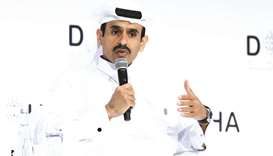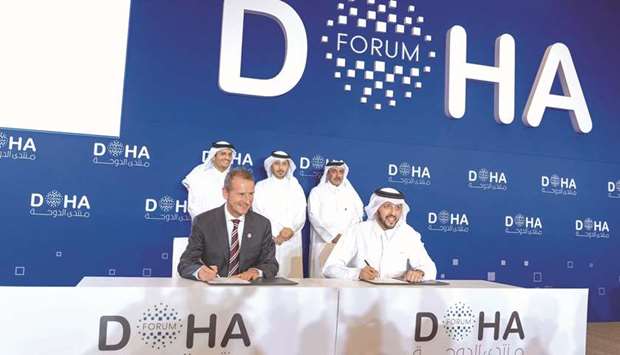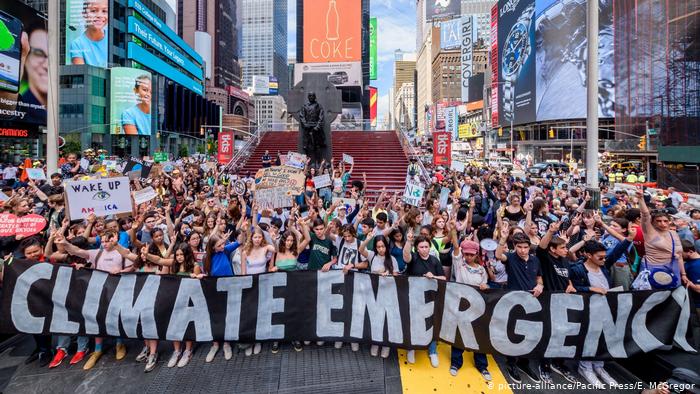هيل إلى بيروت… القديم على قِدَمه؟!

من هنا، يتخذ موضوع الغاز اللبناني – بكل ما يحمله من تفاصيل تقنية – منحى استراتيجياً بامتياز، علماً ان أبعاده السياسية في شقّيها الداخلي والخارجي مرتبطة بشكل عضوي. فخارجياً يتّخذ النفط اللبناني أهمية مضاعفة نظراً “للكميات الهائلة” التي بات من شبه المؤكد انه يختزنها براً وبحراً. وان كانت هذه الكميات نظرياً لا تغيّر الميزان الاستراتيجي المتعلق بانتاج الطاقة في الشرق الاوسط والمطلوبة بغالبيتها للانتاج الصناعي، إلا أنّ الحقول اللبنانية متّصلة جغرافياً بالحقول المصرية والاسرائيلية والسوريّة والأهم القبرصية. ذلك يعني انه وعدا عن الدور المباشر الذي يحظى به “غاز لبنان” فهو قد يبرز أيضاً لدى طرح إشكالية أساسية هي المتعلقة بأماكن انشاء محطات تسييل وتكرير الغاز بالاضافة الى المنشآت والبنى التحتية الضرورية لتسييله مع آليات نقله وتسويقه. وعليه، لا يمكن التنبؤ بهويّة الدولة التي ستتحكّم بما قد يستجدّ من تحالفات إقليمية ودولية؛ هذا الامر سيحتم حداً أدنى من التعاون بين الدول المعنيّة، وهنا يكمن بيت القصيد، بما أن هذه البلدان في حالة عداوة أو في حالة تصادم ما بين المحاور السائدة في الاقليم والمرشّح للتفاقم بسبب التنافس الشرس على الثروة الجديدة في شرق المتوسط.
اما البعد الثالث الذي يكتسبه غاز لبنان فـ”ماليّ” بحت والمقصود هنا ليس مالية الدولة بل الميل الى الالتفاف حول القانون لاستفادة الفريق السياسي المهيمن، وذلك من خلال السمسرات وعقود الخدمة للشركات والانشاءات المرتبطة بهذا القطاع فضلاً عن القدرة على توظيف “الازلام” تماماً كما جرى ولا يزال في شركتي الاتصالات وكازينو لبنان والكسارات والسدود وغيرها من المجالس التي قد تكون اكثر إغراء، خصوصاً اذا استغلّت المراسيم كمنفذ مقونن للهيمنة على ما تبقّى من موارد في البلاد، لا سيّما وأن التعويل على العائدات النفطية “اليوم”، أي في ظلّ عدم وجود قانون واضح ينظّم وجهة استخدام هذه الاموال من خلال الصندوق السيادي، يعني حُكماً أننا تخلينا عن ثروتنا هذه لخدمة الدين وتحويلها من أموال استثمارية الى أموال “منهوبة”.
من هذا المنطلق، لا يجوز الإفراط في التعويل على الثروة النفطية لانتشال لبنان من مأزقه النقدي، فالجدوى الاقتصادية، بحسب الخبراء، للنفط والغاز في المنطقة ككلّ لم تُثبّت بعد لا سيما وأن كلفة استخراج هذه المواد من قعر البحر تفوق بكثير الكلفة التي تتكبدها روسيا لاستخراج غازها. وبرأي الخبراء، فإنّ امكان تصدير هذا الغاز الى أوروبا على سبيل المثال قد يكون صعباً بما أن الاسعار ستكون عاجزة عن منافسة الغاز الروسي من جهة، ومن جهة ثانية بسبب العوامل الجيو – سياسية في منطقة شرقي المتوسط. أما كلّ ما أُثير عن احتمال إنشاء أنابيب لربط هذه الآبار بأوروبا مروراً باليونان فقد سقط عملياً بعد دخول اسرائيل الى طاولة المباحثات اضافة الى صعوبة تأمين الاموال الاستثمارية اللازمة له.
لا تعني كلّ هذه الفرضيات أن دولة من دول العالم الثالث كلبنان “عاجزة عن الاستفادة من ثرواتها النفطية بل يمكن استغلالها، وإن لم يكن للتصدير، فذلك في إصلاح الكهرباء وتحويل الانتاج ليرتكز على الغاز، وهكذا يتم تخفيض العجز وتالياً تقليص الخضوع لهيمنة صندوق النقد الدولي كلما وجدنا أنفسنا مضطرين الى الاقتراض بنسب وشروط تعجيزيّة”، بحسب الخبراء.
الطروحات الاميركية
من جهة ثانية، تُضاف معضلة ترسيم الحدود التي لا تزال تتخذ حيّزاً من المفاوضات والتي يوليها الجانب الاميركي أهمّية كبيرة خصوصاً في ظلّ التواجد الصيني والروسي في المنطقة. ولا شكّ أن مساعد وزير الخارجية الأميركي للشؤون السياسية ديفيد هيل سيتطرّق الى هذا الملف خلال زيارته إلى بيروت في الايام القليلة المقبلة.
“طروحات ثلاثة، هي ما قدّمه الطرف الاميركي في ما خصّ مسألة ترسيم الحدود مع الكيان الإسرائيلي في المنطقة المتنازع عليها: الاول هو تقسيم رضائي بنسبة ثلث للكيان وثلثين للبنان. الثاني هو تصنيفها كمنطقة عدم أنشطة وبالتالي اعتبارها محظورة للطرفين؛ أما الطرح الثالث فيتمثّل باعتبارها منطقة أنشطة مشتركة، وهو ما يرفضه الجانب اللبناني حتى الساعة متسلّحاً بالقوانين التي ترعى حقوقه في المياه الاقليمية إضافة الى الطلب الذي كان تقدّم به الى الامم المتحدة لحلّ النزاع في هذه القضيّة” يقول الخبير في قوانين وسياسات الطاقة المحامي علي برّو.
ويضيف برّو في اتصال مع “نداء الوطن” أنّ “قبرص تتحمّل مسؤولية مخالفة أحكام الاتفاقية مع لبنان سنداً لاتفاقية 2007 حيث لم يكن ينبغي عليها ترسيم الحدود مع الكيان الاسرائيلي من دون موافقة الدولة اللبنانية. من جهتها، أودعت الدولة اللبنانية الامم المتحدة احداثيات منطقتها الاقتصادية الخالصة، إلا أنها قصرت في مطالبتها قبرص لخرقها احكام الاتفاقية معه. من الناحية القانونية، لبنان جاهز لعمليّة إعادة الترسيم وفقاً للوسائل العلمية التابعة لقانون البحار. ومن خلال لجوئنا الى القانون الدولي، سنتمكن من استعادة حقوقنا السيادية في المياه البحرية”.
في الاطار عينه، يوضح الخبير النفطي رودي بارودي أنه “من المتوقع أن يأتي ديفيد هيل وفي جعبته ملف ترسيم الحدود البحرية. هذا الموضوع بحاجة الى حلّ جذريّ لا سيّما مع بدء لبنان بحفر أول بئر استكشافي مطلع العام المقبل. وبحسب قانون الامم المتحدة للبحار (UNCLOS) لا شكّ أن لبنان سيحظى بالحصة الاكبر من المنطقة الاقتصادية الخالصة المُتنازع عليها، فصحيح أن الكيان الاسرائيلي ليس طرفاً في المعاهدة مع الامم المتحدة، الا أنه طبّق قواعدها من خلال تقيّده ببنود الاتفاقية بينه وبين قبرص. بالتالي أصبح من الممكن اللجوء الى إتفاقية تنمية مشتركة تماماً كما هي الحال بين الكويت والسعودية في ما يُعرف بالمنطقة المحايدة. بهذه الطريقة، تقوم شركة محايدة بعمليات الاستخراج وتوزّع لكلّ دولة حصّتها وفق المعايير الدولية”.
كثيرة تصبح التأويلات عندما يتعلّق الأمر بغاز لبنان وليس هناك من حقيقة مطلقة عندما تكون المسألة جيو – سياسية. وحدها الايام المقبلة ستُظهر نوايا الولايات المتحدة تجاه لبنان إلا أنّ معيار ترسيم الحدود البحرية يجب أن يبقى القانون الدولي منفرداً. ولعلّه من الافضل لهذه الثروة أن تبقى نائمة في قعر البحر لحين ايجاد حلول آنية تُعيد خلق اقتصاد منتج بدلاً من اقتصاد ريعيّ وترك هذا الملف يأخذ مساره الطبيعي لئلا تصبح عوائده…”أموالاً منهوبة”.











